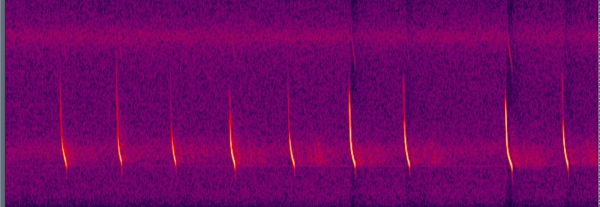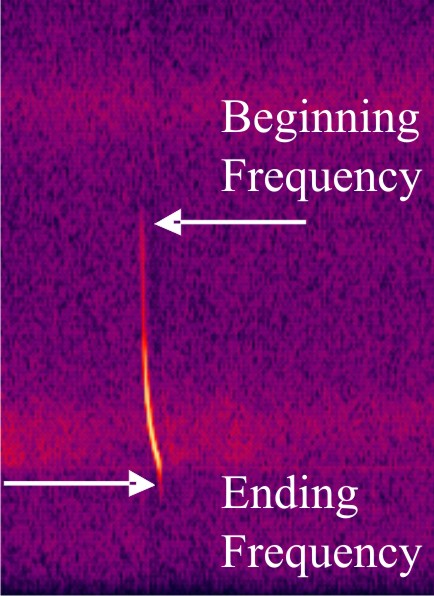On-Board Microphones Reveal Small
Changes in the Echolocation Calls of Two Bats Flying Together
Mary E. Bates - mary_bates@brown.edu
Psychology Dept.,
Yu Watanabe
Yuto Furusawa
Emyo Fujioka
Shizuko Hiryu
Hiroshi Riquimaroux
Faculty of Life and Medical Sciences
Jeffrey Knowles
James A. Simmons
Neuroscience Dept.
Popular version of paper 4pAB7
Presented Thursday afternoon, April 22, 2010
159th ASA Meeting,
Big brown bats use echolocation to navigate, avoid obstacles, and detect and capture their insect prey. While flying, they emit intense, high-frequency sounds and then listen to the echoes that bounce back from objects in the environment.
Bats are social creatures, usually living in colonies with
dozens of other bats, and will often gather at the same hunting grounds each
night. The echolocation signals used by bats of the same species are similar.

To study how bats avoid interference from the sounds of other bats, we took advantage of a new technology that allows us to make accurate recordings of bats echolocation calls as they fly. The Telemike is a lightweight (~ 0.6 g) microphone that can record and transmit bat calls using radio frequencies. It is worn by the bat while it flies, with the microphone positioned above its mouth. As the bat flies and echolocates, the constant proximity of the microphone to the bats mouth results in faithful recordings of the sounds that it makes. In contrast, a stationary microphone would not record the sounds with as much accuracy, as aspects of the sound can change as it travels from the bat to the microphone at different distances and angles.
We flew pairs of bats, each wearing a Telemike, in a dark flight room that contained several obstacles (hanging plastic chains). Bats typically flew in several circles around the room before landing on one of the walls. We recorded stereo videos of the flights using infrared cameras, where the bats showed up as bright white because of their body heat.
We compared flights in which only one bat was flying to
flights with two bats. In particular we were interested in seeing if the beginning
and ending frequency of the bats calls changed when they were flying
near another bat.

We found that bats shifted the frequency of their sounds slightly when the distance between them was less than about 1 m. One bat flying singly or two bats flying at a greater distance had relatively stable starting and ending frequencies. It was only when the distance between two flying bats decreased that they made any changes to the frequency of their calls. Changes in frequency were small, around 5 kHz or less.
A small shift in the frequency of a biosonar sound appears to be enough for one bat to distinguish its call from the calls and echoes of other bats. Bats may alter the frequency of their calls when they are very close to another echolocating bat to avoid interference from its sounds but may not need to make any changes when the other bat is farther away.